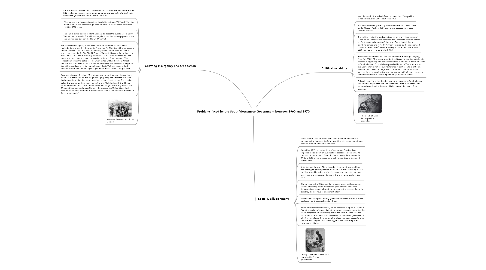Problems faced by the South Vietnamese Government between 1960 and 1970
by Tejas Iyer

1. Growing Insurgency and Opposition
1.1. The formation of the National Liberation Front of South Vietnam in December 1960 marked an increase in growing insurgency and opposition to the South Vietnamese government, in the period 1960-1970
1.2. This marked and increase in political instability, between 1959 and 1961, the number of South Vietnamese government officials assassinated rose from 1200 to 4000 a year.
1.3. The NLF allowed leaders in North Vietnam to direct the guerilla war in South Vietnam unobtrusively. The NLF was regularly supplied with equipment, arms and ammunition through the Ho Chi Minh trail.
1.4. The increased insurgency is best seen in the Tet offensive in 1968, which marked a turning point in the war. On November 17 1967 the NLF announced a three day cease ir for Christmas, a three day cease fire for New Yearvand a seven day cease fire for Tet. The NLF and NVA used this cease fire to launch a major offensive. Attacks involving 70 000-80 000 NLF were launched against the nine largest cities and thirty provencial capitals in South Vietnam. The longest battle was the battle for Hue which lasted until 25 February. Whilst the NLF and NVA were driven out, the battle showed the increased strength of the NLF in conducting military operations in South Vietnam. America had been at war for two and a half years, yet the NLF was still as strong as ever.
1.5. Secondary Source, Sheehan: "The Vietnamese on both sides of the war in the South were not fooled by this stage managing. They knew that the Viet Minh had returned and that they were participating in a historic replay. The guerillas called themselves by the original name the Viet Minh had used- Giai Phong Quan (liberation army) ...The United States had sought to destroy the old Viet Minh and had renamed it Viet Cong. In the process the United States had created a Viet Minh, far more formidable than the old Viet Minh the French had faced in the south."
1.6. increased insurgency in South Vietnam
2. Political Instability
2.1. With the death of Ngo Dinh Diem in November 1963 political instability prevailed until about June 1965
2.2. This instability was typified by the Revolutionary Military Council. Under Nguyen Kanh, in 1964 there was a succession of seven different councils.
2.3. The political instability, and America's complicity in the murder of Diem led to an increase in American involvement in order to restore an "anti- communist bastion" (Karnow). This ultimately led to bombing campaigns in North Vietnam (justified by the exaggerated Gulf of Tonkin Incident), and the landing of American troops, with 3500 marines arriving on 8 March 1965.
2.4. Primary source- General William Westmoreland, Planning a Tragedy, New York 1982 "The young president, in his zeal, made the unfortunate mistake of approving our involvement in the overthrow of President Diem in South Vietnam. Political chaos prevailed in South Vietnam for over two years. Were it not for our interference in political affairs of South Vietnam, and based on pragmatic consideration, we could, in my opinion, have justifiably withdrawn our support at that tme in view of a demonstrated lack of leadership and unity in South Vietnam.
2.5. Political Instability in this time led to a power vacuum in South Vietnam, with was filled up by the National Liberation Front. Juxtaposed with increased American involvement, this led to ongoing war in South Vietnam.
2.6. The death of Diem led to political instabiltiy
3. Social Disillusionment
3.1. In the period 1960- 1970 the inability of the South Vietnamese government to implement reform meant the disillusionment of many aspects of South Vietnamese society.
3.2. On 8 May 1963 on celebrations of the birth of Buddha, Diem imposed a crackdown on Buddhists celebrations, killing nine. As demonstrations spread, Diem did little to rectify the situation. On 11 June 1963 a sixty six year old monk named Quang Duc burnt himself alive.
3.3. After the overthrow of Diem, the administration of Nguyen Kanh did nothing to gain support of the people, in fact worsening it. The political instability led to social disillusionment, especially among peasants, who increasingly turned to the promising ideals of the NLF.
3.4. The government of Thieu and Ky increased social disillusionment. Like all preceding South Vietnamese governments, the heavy American involvement allowed the government to assume the notion that they did not have to implement reform.
3.5. Widespread corruption among government officials added to social disillusionment, especially under Thieu.
3.6. Social disillusionment ultimately led to increased support for the NLF. "What is crucial, of course, is that the poorer peasants supported the NLF's programme because they benefitted from it... land was the NLF's key to recruitment, and it successfully focussed a great deal of effort on mobilizing the children of landless and poor peasants, who had the most to gain from the struggle. It was, ultimately, their revolution. " (Kolko)
3.7. Quang Duc burns himself alive in protest to Diem's government


